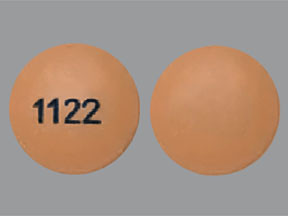DAPAGLIFLOZIN/SAXAGLIPTIN - ORAL
PHONETIC PRONUNCIATION: (DAP-a-gli-FLOE-zin/SAX-a-GLIP-tin)
COMMON BRAND NAME(S): Qtern
GENERIC NAME(S): dapagliflozin propanediol/saxagliptin HCl
Uses
USES: This medication is a combination of 2 drugs: dapagliflozin and saxagliptin. It is used with a proper diet and exercise program to control high blood sugar in people with type 2 diabetes. Controlling high blood sugar helps prevent kidney damage, blindness, nerve problems, loss of limbs, and sexual function problems. Proper control of diabetes may also lessen your risk of a heart attack or stroke. Dapagliflozin works by increasing the removal of sugar by your kidneys. Saxagliptin works by increasing levels of natural substances called incretins. Incretins help to control blood sugar by increasing insulin release, especially after a meal. They also decrease the amount of sugar your liver makes.
How to use DAPAGLIFLOZIN/SAXAGLIPTIN - ORAL
HOW TO USE: Read the Medication Guide provided by your pharmacist before you start taking this medication and each time you get a refill. If you have any questions, ask your doctor or pharmacist. Take this medication by mouth with or without food as directed by your doctor, usually once daily in the morning. The manufacturer directs not to split/cut the tablet before taking it. However, many similar drugs (immediate-release tablets) can be split/cut. Follow your doctor's directions on how to take this medication. Use this medication regularly to get the most benefit from it. To help you remember, take it at the same time each day. Tell your doctor if your condition does not get better or if it gets worse (such as if your blood sugar is too high or too low).
Side Effects
Precautions
Interactions
Overdose
Images
Reviews
Faq for DAPAGLIFLOZIN/SAXAGLIPTIN - ORAL
Dapagliflozin/Saxagliptin is an oral medication that is used to control blood sugar levels in adults with type 2 diabetes. It is typically used in conjunction with diet and exercise.
Dapagliflozin works by blocking the reabsorption of glucose in the kidneys, leading to increased glucose excretion through urine. Saxagliptin works by increasing the levels of hormones that stimulate the release of insulin, which helps lower blood sugar levels.
Common side effects of Dapagliflozin/Saxagliptin include urinary tract infections, upper respiratory tract infections, increased urination, genital yeast infections, and low blood sugar levels.
Yes, Dapagliflozin/Saxagliptin can be used in combination with other diabetes medications, such as metformin or insulin, to help further improve blood sugar control.
Dapagliflozin/Saxagliptin is usually taken orally once a day, with or without food. It is important to follow the dosage instructions provided by your healthcare provider.
Yes, Dapagliflozin/Saxagliptin can cause hypoglycemia, especially when used in combination with other diabetes medications. Symptoms of hypoglycemia may include shaky or fast heartbeat, sweating, blurred vision, dizziness, or confusion.
It is important to inform your healthcare provider if you have any history of kidney problems, liver problems, or heart failure. Dapagliflozin/Saxagliptin may not be suitable for everyone, and your healthcare provider will determine if it is the right medication for you.
There is limited data on the safety of Dapagliflozin/Saxagliptin during pregnancy and breastfeeding. It is important to discuss with your healthcare provider if you are pregnant, planning to become pregnant, or breastfeeding before starting this medication.
Blood sugar levels may start to improve within a few days of starting Dapagliflozin/Saxagliptin. However, it may take several weeks to see the full effects of the medication.
Disclaimer
IMPORTANT: HOW TO USE THIS INFORMATION: This is a summary and does NOT have all possible information about this product. This information does not assure that this product is safe, effective, or appropriate for you. This information is not individual medical advice and does not substitute for the advice of your health care professional. Always ask your health care professional for complete information about this product and your specific health needs.

No Reviews Yet